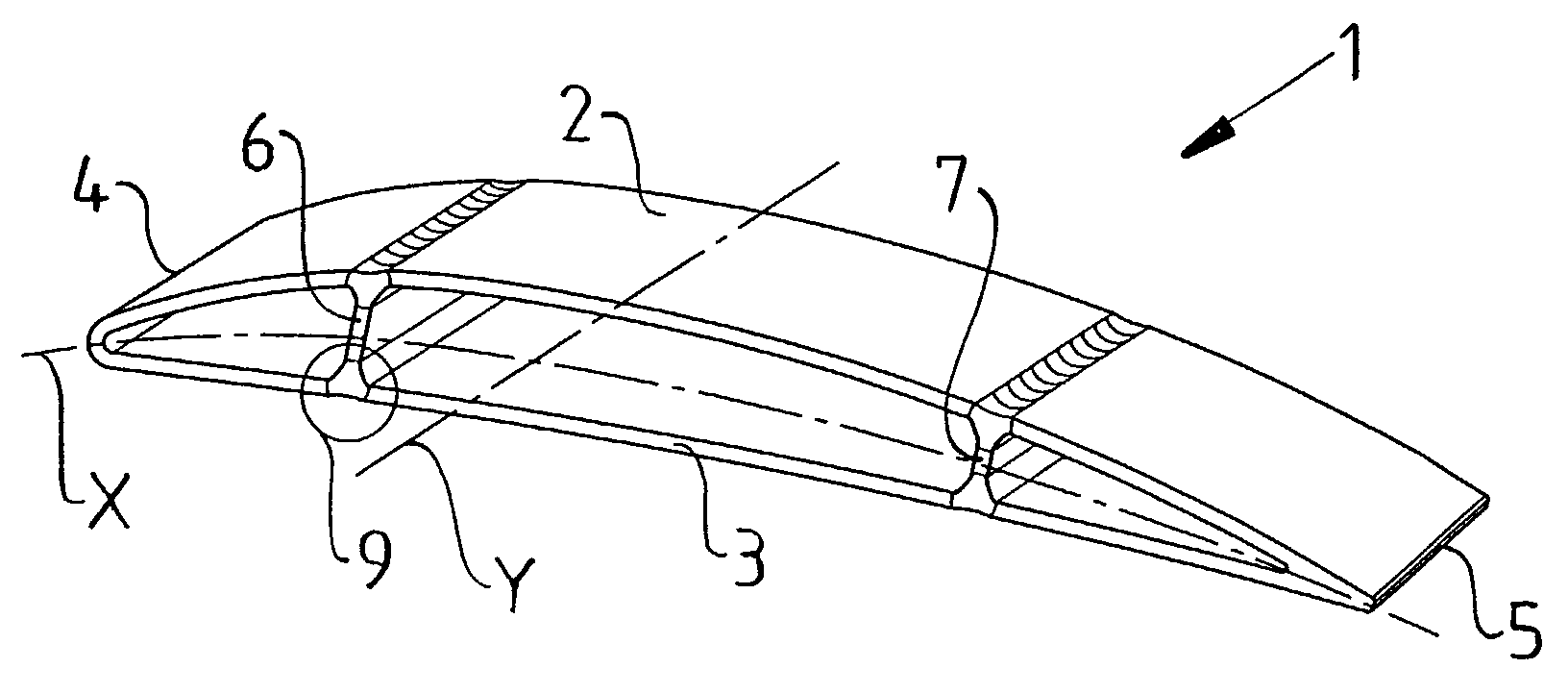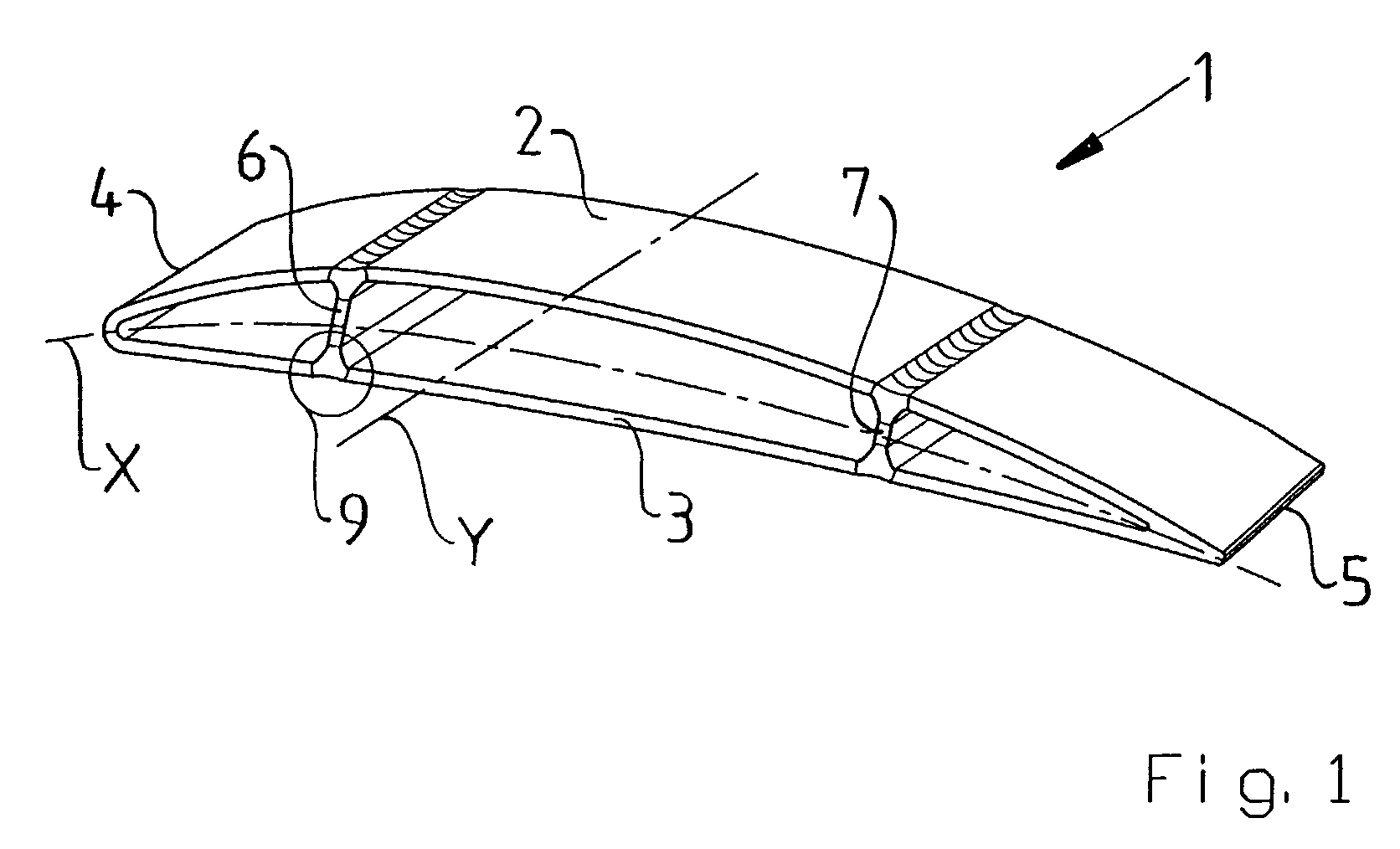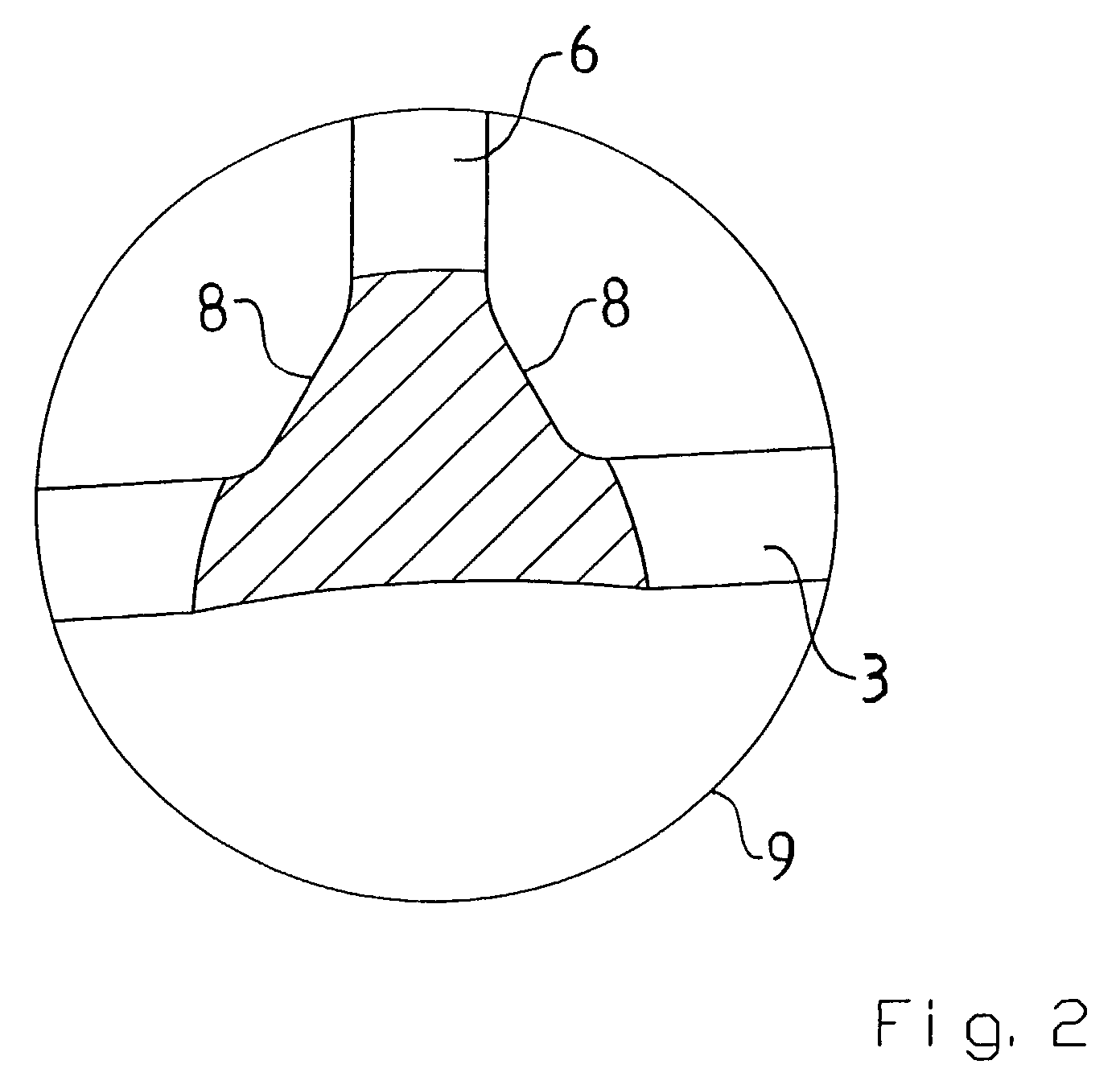Method for manufacturing a hollow blade for a stator or rotor component
- Summary
- Abstract
- Description
- Claims
- Application Information
AI Technical Summary
Benefits of technology
Problems solved by technology
Method used
Image
Examples
Embodiment Construction
[0021]FIG. 1 shows a hollow blade 1 in a perspective view. The blade 1 has a first side wall 2 and a second side wall 3 located opposite one another. The first side wall 2 has a convex cross-sectional shape, and the second side wall 3 has a concave cross-sectional shape. A mean camber line, X, is indicated by a dot-dash line. The mean camber line extends centrally in the blade from a front end 4 of the blade to a rear end 5 of the blade. The front end and rear end are described in relation to the direction from which the gas flow is intended to act during use of the blade in a stator or rotor component.
[0022] Furthermore, two plate-shaped support elements 6, 7 are arranged inside the blade 1. The plate-shaped support elements 6, 7 are arranged upright inside the blade 1 and extend essentially at right angles to the mean camber line, X. Each of the plate-shaped support elements 6, 7 is elongate and extends in the transverse direction of the blade 1, indicated here by a broken line, ...
PUM
| Property | Measurement | Unit |
|---|---|---|
| Angle | aaaaa | aaaaa |
| Shape | aaaaa | aaaaa |
Abstract
Description
Claims
Application Information
 Login to View More
Login to View More - R&D
- Intellectual Property
- Life Sciences
- Materials
- Tech Scout
- Unparalleled Data Quality
- Higher Quality Content
- 60% Fewer Hallucinations
Browse by: Latest US Patents, China's latest patents, Technical Efficacy Thesaurus, Application Domain, Technology Topic, Popular Technical Reports.
© 2025 PatSnap. All rights reserved.Legal|Privacy policy|Modern Slavery Act Transparency Statement|Sitemap|About US| Contact US: help@patsnap.com



